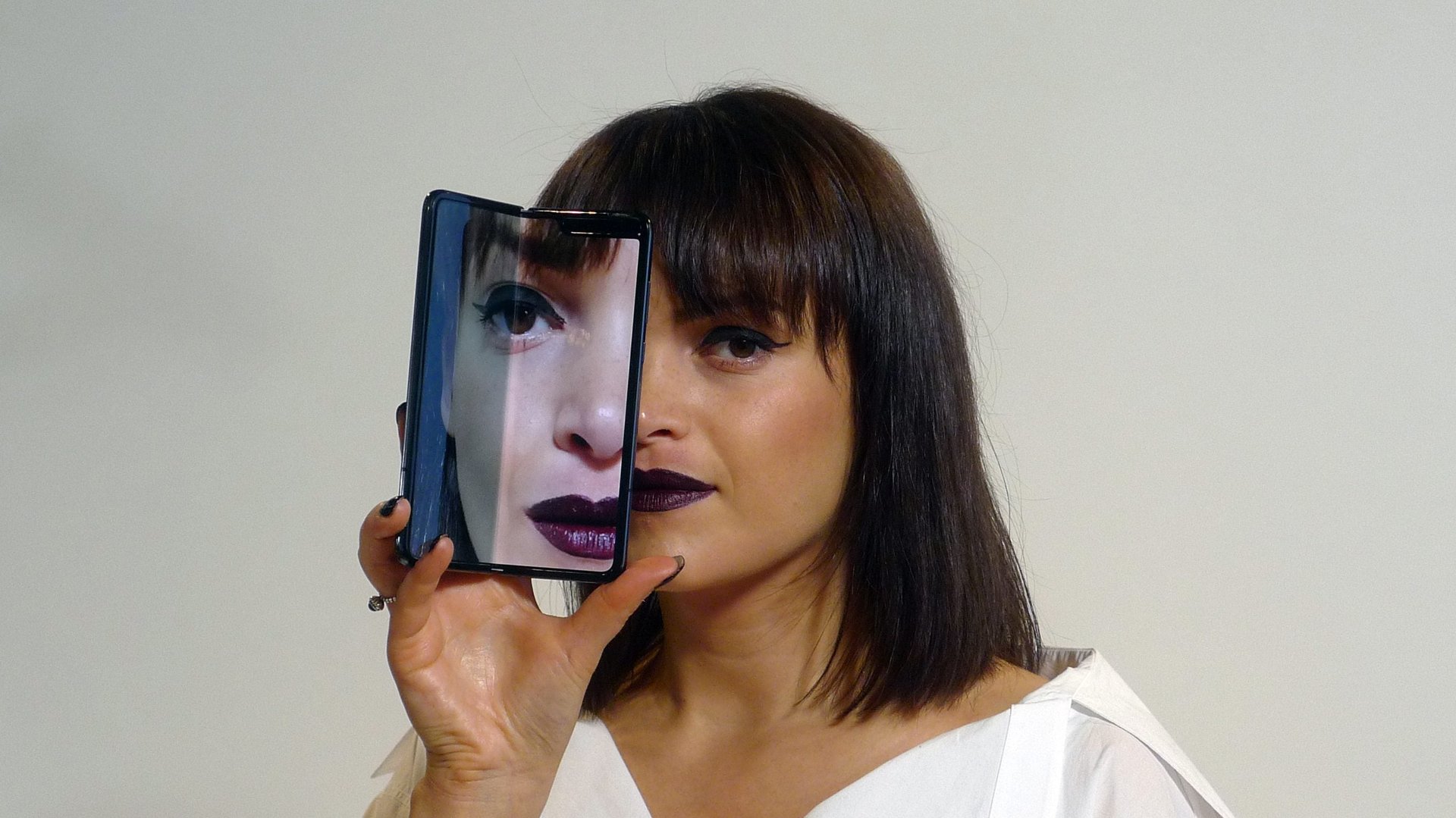The world is going to have its first foldable smartphone, again
Samsung will relaunch the company’s—and arguably the world’s—first mass-market foldable smartphone, Galaxy Fold, in September, after a failed attempt by the South Korean phone maker to roll out this model earlier this year.


Samsung will relaunch the company’s—and arguably the world’s—first mass-market foldable smartphone, Galaxy Fold, in September, after a failed attempt by the South Korean phone maker to roll out this model earlier this year.
The world’s largest smart phone maker announced on July 24 that it has made “improvements” to the previous model, including extending the top protective layer of the phone, and “making it apparent” that the part is an integral part of the display structure and not meant to be removed. When the model debuted to media in April, a large part of the negative feedback about it focused on how easily the screen broke, in some cases after the protective layer was removed by reviewers who had no idea they weren’t supposed to do that.
Other improvements include featuring “additional reinforcements” to protect the phone from external particles when using its foldable function, as well as adding more protection at the top and bottom of the phone’s hinge area, including adding metal layers underneath the display.
The company said the phone will be sold in “select markets” in September, without elaborating on the specific sales date, but said it would reveal more details when “we are closer to the launch.” Samsung confirmed to the Verge that the price will remain the same—it was previously priced at $1,980 in the US.
The company got the world excited in February when it announced the launch of the smartphone, to meet consumer demand for bigger screens, but not bigger devices. The model allows people to get a tablet-sized screen, Samsung’s largest-ever smartphone display, into a device that fits in their pocket. It was designed for multitaskers, according to the company, allowing them to open up to three active apps simultaneously on the main display.
The excitement later turned out to be disappointment in April when at least four reviewers found their screens going black or flickering. Samsung initially replaced those review units, saying the phone had been tested to withstand over 200,000 unfolds, and that it was still on track to launch the device for public purchase on April 26.
Within a week, Samsung had canned the launch and told prospective customers it was going to strengthen the smartphone’s screen’s protection, and would update them in the coming weeks on when it might actually make the device available.